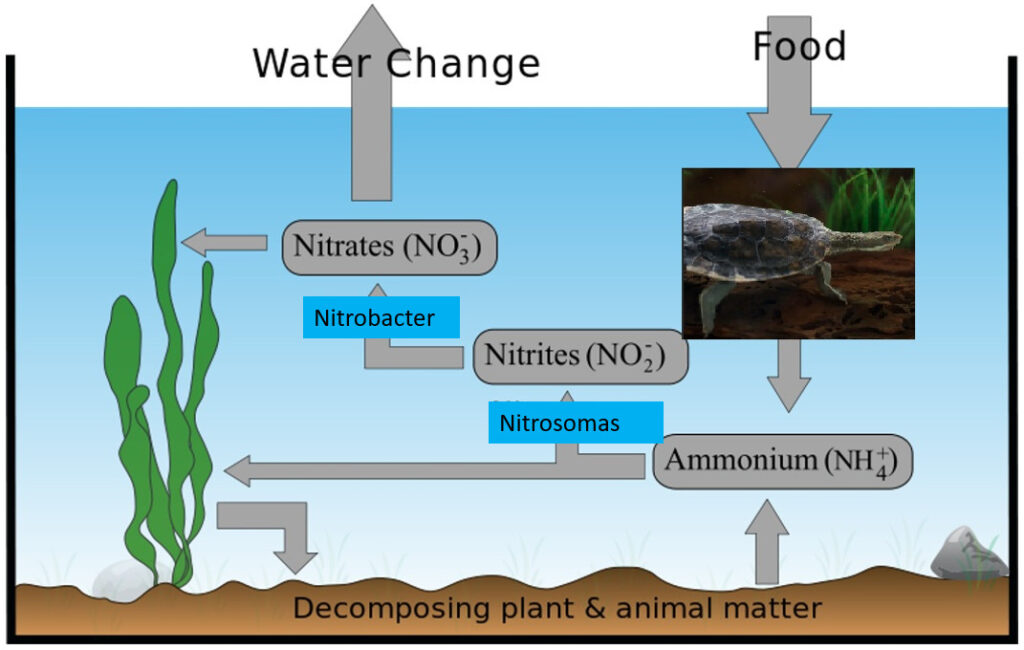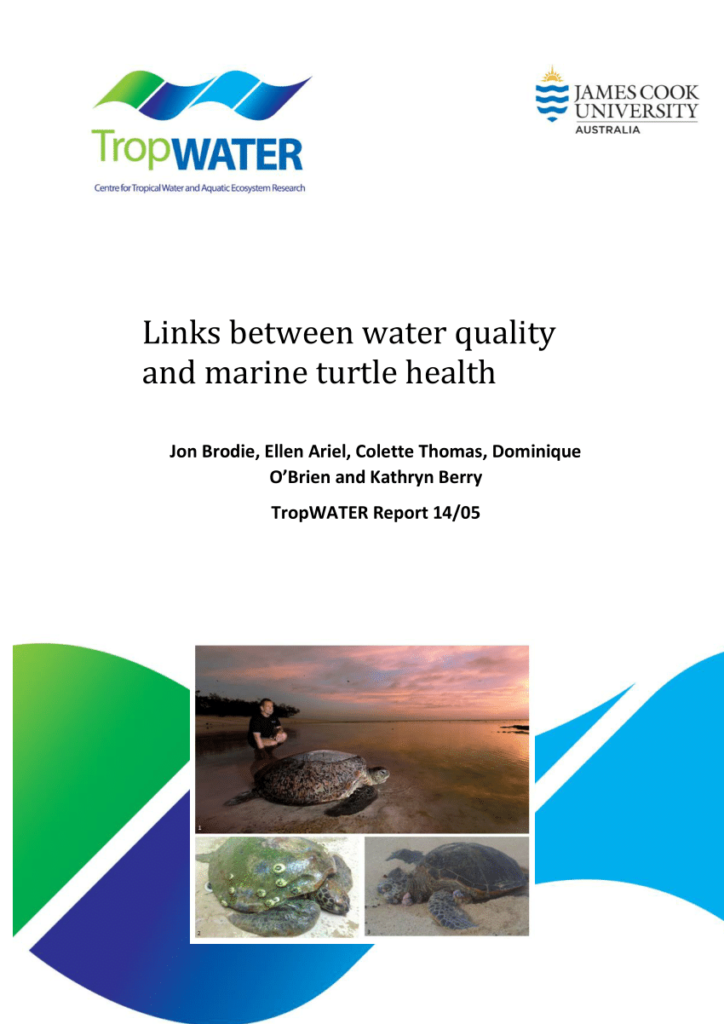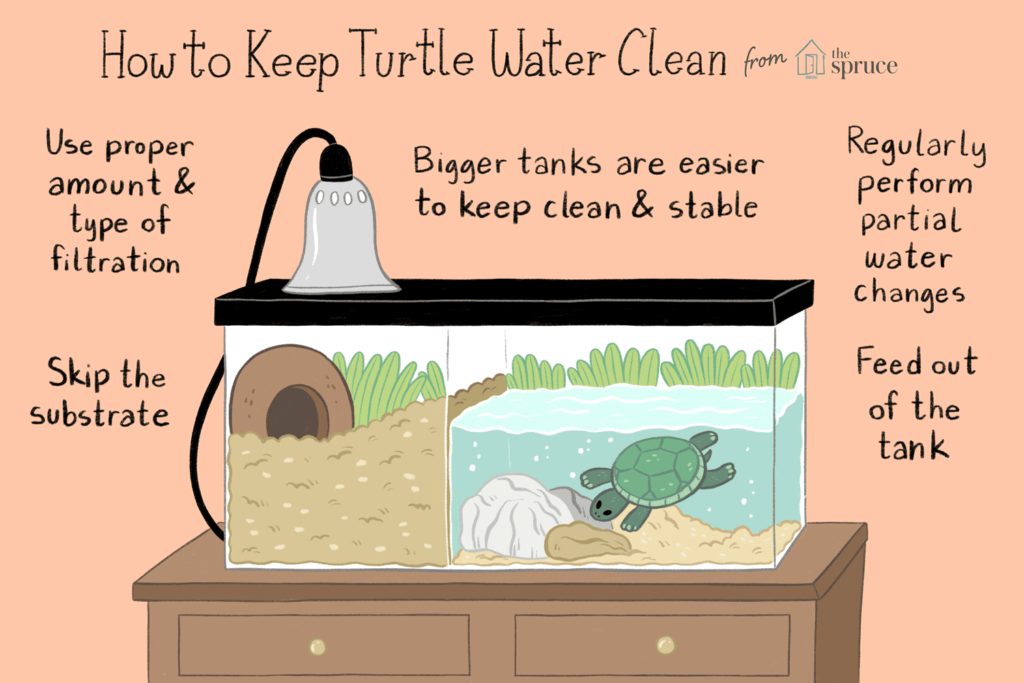Imagine you are a majestic sea turtle, gracefully swimming through the crystal-clear waters of the ocean. As you glide through the vibrant coral reefs, you can’t help but wonder about the vital role that water quality plays in your health and overall well-being. From the temperature and pH level to the presence of pollutants, the quality of the water you inhabit directly affects your survival. In this article, we will explore the significant impact of water quality on turtle health and well-being, shedding light on the urgent need for conservation efforts to preserve these magnificent creatures and their fragile aquatic ecosystems.
The Importance of Water Quality for Turtle Health and Well-being
Turtles are fascinating creatures that require a specific environment to thrive. One of the most crucial factors in ensuring their health and well-being is maintaining proper water quality. Water quality plays an essential role in all aspects of turtle life, from their physical health to their behavior and overall well-being.
The essential role of water quality in turtle health
Water quality is a vital component of a turtle’s habitat and plays a significant role in their overall health. Turtles spend the majority of their lives in water, making it essential for their survival. Clean and well-maintained water provides turtles with the necessary conditions to live a healthy life.
Turtles rely on water for many essential functions, such as respiration, hydration, and regulating their body temperature. Water quality directly affects their ability to perform these functions efficiently. Poor water quality can hinder the turtle’s ability to breathe and absorb oxygen, leading to respiratory issues and overall health problems.
How water quality impacts turtle well-being
Maintaining proper water quality is crucial for a turtle’s overall well-being. It directly affects their physical health, mental state, and behavior. When turtles are exposed to poor water quality, it can lead to stress, weakened immune systems, and a lower quality of life.
Water quality also influences a turtle’s behavior. Turtles need clean water to engage in normal activities such as feeding and basking. If the water quality is compromised, turtles may become lethargic, lose their appetite, or avoid basking areas. These behavioral changes can serve as indicators of water quality issues and should not be ignored.
The potential risks of poor water quality for turtles
Poor water quality poses numerous risks to turtles’ health and well-being. One of the most immediate and significant risks is respiratory problems. Turtles rely on their ability to breathe through their skin and rely on oxygen dissolved in the water. If the water is polluted or lacking oxygen, turtles may struggle to breathe properly, leading to respiratory distress and potentially fatal consequences.
Another risk of poor water quality is skin and shell issues. When turtles are exposed to water with high levels of ammonia or other pollutants, it can damage their skin and shells. These injuries can lead to infections, shell rot, and other various health problems that can severely impact their quality of life.
Additionally, poor water quality can result in digestive disorders. Turtles may ingest harmful substances present in the water, leading to gastrointestinal issues and nutrient imbalances. These digestive disorders can cause discomfort, malnutrition, and further complications for the turtle’s overall health.
The benefits of maintaining proper water quality
On the other hand, maintaining proper water quality has numerous benefits for turtles. Clean and well-maintained water ensures that turtles can engage in their natural behaviors, such as swimming, foraging, and basking. It also provides them with a comfortable and stress-free environment, which is crucial for their overall well-being.
Optimal water quality promotes healthy growth and development in turtles. Turtles that live in clean water with balanced nutrient levels are more likely to have robust immune systems, better shell and skin condition, and overall better health. Proper water quality also reduces the risk of diseases and infections, allowing turtles to live longer and happier lives.
Factors Affecting Water Quality for Turtles
Several factors influence the water quality in a turtle’s habitat. Understanding these factors and their impact on water quality is essential for creating and maintaining a suitable environment for turtles.
Temperature
Temperature plays a significant role in water quality for turtles. Different species of turtles have specific temperature requirements, and maintaining the appropriate water temperature ensures their well-being. Water that is too cold or too warm can stress turtles and affect their metabolism and immune system. It is crucial to monitor and regulate the water temperature to keep it within the suitable range for the specific species of turtles.
pH levels
The pH level of water is another essential factor to consider for turtle health. Turtles have specific pH requirements based on their natural habitat. Deviations from the appropriate pH range can cause stress and negatively affect the turtle’s overall health. Regular monitoring of pH levels and adjusting them as needed is crucial for maintaining optimal water quality.
Ammonia and nitrate levels
Ammonia and nitrate levels are indicators of organic waste accumulation in water. Excessive amounts of ammonia and nitrates can be harmful to turtles. High ammonia levels can cause respiratory distress and damage the turtle’s skin and shell. Nitrate buildup can also lead to stress and pose a risk to turtle health. Regular monitoring and proper filtration are necessary to maintain safe levels of ammonia and nitrates in the water.
Dissolved oxygen levels
Dissolved oxygen levels are critical for a turtle’s respiration. Turtles rely on oxygen dissolved in the water to breathe. Low oxygen levels can lead to respiratory issues and potentially suffocate the turtles. It is important to ensure proper aeration and circulation in the water to maintain adequate dissolved oxygen levels.

Measuring Water Quality for Turtles
Accurately measuring and monitoring water quality is essential for ensuring the well-being of turtles. Regular water quality testing allows for early detection of potential issues and allows for timely intervention.
Testing temperature and pH levels
Regularly testing the water temperature and pH levels is crucial for maintaining optimal water quality. Water temperature can be measured using a thermometer specifically designed for aquatic environments. pH levels can be tested using pH testing strips or electronic pH meters. Monitoring these parameters helps ensure that the water conditions are suitable for the turtles.
Monitoring ammonia and nitrate levels
Regular monitoring of ammonia and nitrate levels is vital to prevent water pollution. Ammonia test kits are available to measure the ammonia concentration in the water accurately. Nitrate levels can be measured using dedicated nitrate test kits. These tests provide valuable information about the water quality and allow for adjustments to be made, if necessary.
Assessing dissolved oxygen levels
Monitoring dissolved oxygen levels is crucial for maintaining a healthy aquatic environment for turtles. Oxygen test kits or electronic oxygen meters can be used to measure the dissolved oxygen concentration accurately. Regular assessments help identify any deficiencies and allow for intervention to prevent respiratory problems in turtles.
Utilizing water quality test kits
Water quality test kits are valuable tools in maintaining proper water quality for turtles. These kits often include various tests for temperature, pH, ammonia, nitrate, and dissolved oxygen. They provide a comprehensive assessment of the water conditions and aid in identifying any potential issues. Utilizing these test kits regularly allows for proactive measures to maintain optimal water quality.
Maintaining Optimal Water Quality for Turtles
Once the water quality is tested and monitored, it is crucial to take the necessary steps to maintain optimal conditions for turtles. Several practices can contribute to a healthy and clean habitat for turtles.
Creating a suitable habitat
Designing a suitable habitat is essential for maintaining optimal water quality for turtles. The enclosure should be spacious enough to accommodate the turtle comfortably. It should also include appropriate filtration systems, basking areas, and hiding spots. Providing a suitable habitat ensures that the turtle’s water quality is not compromised and allows them to engage in their natural behaviors.
Regular water quality testing and monitoring
Regular testing and monitoring of water quality should be a routine practice for turtle owners. By monitoring temperature, pH levels, ammonia and nitrate levels, and dissolved oxygen levels, it becomes easier to identify any deviations from the optimal conditions promptly. Proactive intervention ensures that water quality issues are addressed promptly, preventing potential health problems for turtles.
Filtration and water circulation
Investing in a reliable filtration system is essential for maintaining optimal water quality. Filtration systems help remove organic waste, debris, and harmful pollutants from the water. Water circulation aids in evenly distributing the oxygen and maintaining consistent water parameters throughout the enclosure. Regular maintenance and cleaning of the filtration system are necessary to ensure its effectiveness.
Proper tank cleaning and maintenance
Regular tank cleaning is crucial for ensuring optimal water quality. Regularly removing waste, uneaten food, and debris prevents the accumulation of harmful substances in the water. Routine water changes also help maintain proper water parameters and prevent the buildup of ammonia and nitrates. Cleaning the tank and performing water changes at appropriate intervals are vital for the well-being of turtles.

The Effects of Poor Water Quality on Turtle Health
Poor water quality can have severe consequences on the health and well-being of turtles. Understanding the potential effects can help raise awareness and prompt action to maintain optimal conditions.
Respiratory problems
Turtles rely on their ability to breathe through their skin and absorb oxygen from the water. Poor water quality with low oxygen levels or high levels of pollutants can hinder this process. The resulting respiratory problems can range from mild respiratory distress to severe respiratory failure, which can be life-threatening for turtles.
Skin and shell issues
Poor water quality containing high levels of ammonia or other pollutants can cause skin and shell issues in turtles. These issues can range from mild irritation to severe infections and shell rot. Injured skin and compromised shells not only impact the turtle’s physical health but also increase their vulnerability to diseases and infections.
Digestive disorders
Poor water quality can contribute to digestive disorders in turtles. Ingesting harmful substances present in polluted water can disrupt their gastrointestinal system, leading to discomfort, nutrient imbalances, and malnutrition. Digestive disorders can significantly impact a turtle’s overall health and well-being.
Increased stress and weakened immune system
Turtles subjected to poor water quality experience increased stress levels, which can weaken their immune system. A weakened immune system makes turtles more susceptible to infections, diseases, and other health issues. Chronic stress can have long-term consequences and significantly reduce a turtle’s quality of life.
Preventing and Addressing Water Quality Issues
Preventing and addressing water quality issues is essential for maintaining turtle health and preventing potential problems. By monitoring and taking appropriate actions, water quality issues can be effectively managed.
Identifying signs of poor water quality
Being able to identify signs of poor water quality is crucial for addressing issues promptly. Observable signs include lethargy, loss of appetite, changes in swimming behavior, and discoloration or damage to the skin and shell. Any unusual behavior or physical changes should prompt further investigation into water quality parameters.
Addressing temperature and pH imbalances
Regular monitoring of water temperature and pH levels is key to addressing imbalances. If the water temperature is too high or too low, adjustments can be made using water heaters or coolers. Similarly, pH levels can be adjusted using pH buffering solutions or other appropriate methods. Ensuring that temperature and pH levels are within the optimal range helps maintain proper water quality.
Reducing ammonia and nitrate levels
To reduce ammonia and nitrate levels, proper tank cleaning and maintenance are essential. Regular removal of waste, uneaten food, and debris helps prevent the accumulation of organic waste that leads to increased ammonia levels. Routine water changes also help dilute nitrate levels. Additionally, employing effective filtration systems aids in reducing ammonia and nitrate levels and maintaining water quality.
Improving dissolved oxygen levels
Improving dissolved oxygen levels can be achieved through proper aeration and water circulation. Ensuring that there is adequate oxygen exchange in the tank or enclosure promotes healthy respiration for the turtles. The use of air stones, water pumps, and other aeration tools can help maintain optimal dissolved oxygen levels.

The Role of Nutrition in Turtle Health and Well-being
In addition to maintaining proper water quality, providing turtles with a balanced diet is essential for their health and well-being. Proper nutrition plays a significant role in their growth, development, and overall vitality.
The importance of a balanced diet for turtles
A balanced diet is crucial for turtles as it provides them with the essential nutrients their bodies need to function properly. A diet that is well-rounded and diverse ensures turtles receive the necessary vitamins, minerals, proteins, and other nutrients for optimal health. Feeding turtles a balanced diet helps prevent malnutrition and related health issues.
Nutritional requirements for turtles
The nutritional requirements of turtles vary depending on their species, age, and size. However, a diet for most turtles should consist of a combination of animal protein, vegetables, fruits, and aquatic plants. Animal protein can be provided in the form of commercial turtle pellets, insects, worms, or small fish. Vegetables and fruits offer essential vitamins and minerals, while aquatic plants provide additional fiber and nutrients.
Feeding strategies for optimal health
Developing a feeding strategy that meets the nutritional needs of turtles is essential. Feeding should be done in appropriate portions and at appropriate intervals, taking into account the turtle’s size and activity level. Overfeeding can lead to obesity and related health issues, while underfeeding can result in malnutrition. Providing a varied diet and offering live prey or enrichment foods can stimulate natural foraging behaviors and promote mental and physical well-being.
The Connection Between Water Quality and Turtle Behavior
Water quality has a strong influence on turtle behavior. The condition of the water can significantly impact their activity levels, feeding behaviors, and basking habits.
Impact of water quality on turtle activity levels
Turtles that are exposed to poor water quality may display reduced activity levels. They may become lethargic or show a lack of interest in their environment. Clean and well-maintained water with optimal water parameters encourages turtles to exhibit normal activity levels, allowing them to swim, explore, and interact with their surroundings.
Effects of poor water quality on feeding and basking behavior
Poor water quality can influence a turtle’s feeding behavior and appetite. Turtles may lose their appetite or refuse to eat if they are stressed or feel uncomfortable in their environment. Additionally, water pollutants can impact the taste and quality of the food, further deterring turtles from feeding. Adequate water quality promotes healthy feeding behaviors and ensures turtles receive the proper nutrition they need.
Basking behavior is also affected by water quality. Turtles require clean and warm basking areas to regulate their body temperature and maintain their health. If the water quality is compromised, turtles may avoid basking areas or display abnormal basking behaviors. Ensuring optimal water quality encourages turtles to engage in their natural basking behaviors, assisting in their overall well-being.
Behavioral changes as indicators of water quality issues
Changes in behavior can often serve as indicators of water quality issues. Turtles that display abnormal behavior, such as aggression, territoriality, or isolation, may be experiencing discomfort due to poor water quality. Any sudden change in behavior should prompt a thorough assessment of the water parameters to address and resolve any underlying water quality issues.

Disease and Water Quality in Turtles
Water quality plays a significant role in the overall health and disease susceptibility of turtles. Poor water quality can contribute to the development of various diseases and infections.
Water quality as a contributing factor to turtle diseases
Water quality can significantly influence the occurrence and severity of diseases in turtles. Poor water quality compromises the turtle’s immune system, making them more vulnerable to pathogens. Inadequate filtration, high levels of organic waste, and poor water hygiene increase the risk of disease transmission and outbreak. Maintaining optimal water quality reduces the likelihood of disease occurrence and aids in maintaining turtle health.
Common diseases related to poor water quality in turtles
Various diseases are associated with poor water quality in turtles. Shell rot, caused by bacterial or fungal infections, is commonly linked to polluted water conditions. Respiratory infections can also arise due to low oxygen levels or high levels of pollutants in the water. Additionally, poor water quality can contribute to parasites or the growth of harmful algae, further compromising turtle health. Regular water quality monitoring and proper maintenance practices are vital for preventing these diseases.
Preventive measures for disease outbreaks
Prevention is key when it comes to disease outbreaks in turtles. Maintaining optimal water quality is a fundamental preventive measure. Regular water testing, appropriate filtration, proper tank cleaning, and regular maintenance are essential practices for preventing the growth and transmission of pathogens. Quarantining new turtles before introducing them to an established habitat can also help prevent the spread of diseases. By implementing these preventive measures, turtle owners can significantly reduce the risk of disease outbreaks.
Summary and Conclusion
Water quality plays a critical role in the health and well-being of turtles. Maintaining proper water quality is essential for ensuring turtles thrive in their environment. The quality of the water directly impacts their respiratory system, skin, shell, digestive health, and overall immunity. By being aware of the factors that affect water quality, regularly monitoring and testing the water, and taking appropriate steps to maintain optimal conditions, turtle owners can provide a safe and healthy habitat for their turtles.
Proper nutrition is also vital for turtle health and well-being. Feeding a balanced diet that meets their nutritional requirements promotes optimal growth, development, and vitality. It is important to closely monitor water quality and maintain suitable conditions to ensure turtles exhibit normal behavior, such as activity levels, feeding habits, and basking behaviors. Regular water quality testing, appropriate tank maintenance, and preventive measures against diseases are crucial for the long-term health and well-being of turtles. Education and awareness about the importance of water quality are essential for promoting responsible turtle ownership and ensuring the best possible care for these amazing creatures.

